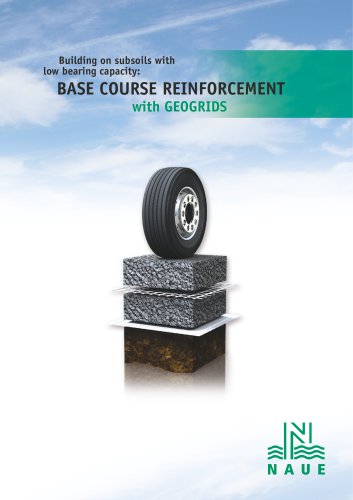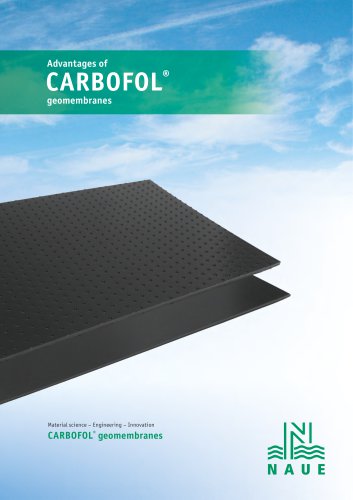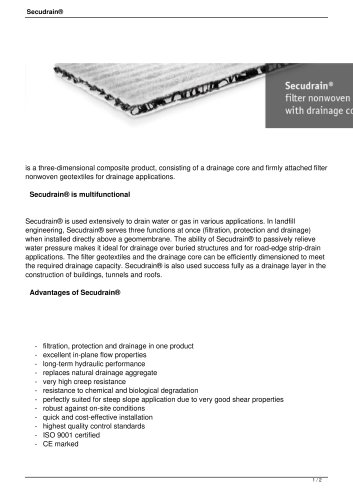
Catalog excerpts
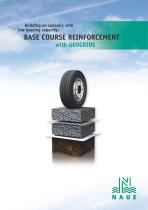
Building on subsoils with low bearing capacity: BASE COURSE REINFORCEMENT with GEOGRIDS
Open the catalog to page 1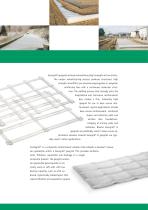
Secugrid® geogrids achieve extraordinary high strengths at low strains. The unique manufacturing process produces structured, high strength monolithic pre-stressed polypropylene or polyester reinforcing bars with a continuous molecular structure. The welding process that strongly joins the longitudinal and transverse reinforcement bars creates a firm, inherently rigid geogrid for use in base course reinforcement. Typical applications include base course reinforcement, reinforced slopes and retaining walls and earthen bridging of mining voids and sinkholes. Biaxial Secugrid® Q geogrids are...
Open the catalog to page 2
TABLE OF CONTENTS TOPIC PAGE
Open the catalog to page 3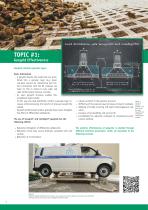
Load distribution wJltU Se.cugrid<8> and. Combigrid© TOPIC #1:Geogrid Effectiveness 2ao^ «- 2 • ko« hm a ) | 2a s (B ♦ 2 • k • tan a) SuNjrftdt Soil Load, distribution anal1a > (t Aggregate (kick Jss k < Se rrwjn d' - Co^tXgruA© Geogrids reinforce granular layers Basic Information - A geogrid absorbs the loads that are transferred into a granular layer (e.g. base/ sub-base course) via interlocking and friction (interaction with the fill material, see Topic 2). This is similar to how rebar and steel reinforcement improve concrete. - An open geogrid structure enables this exceptional...
Open the catalog to page 4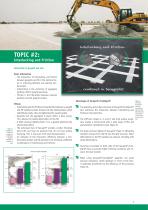
Interlocking and Friction Interaction of geogrid and soil Basic Information - The interaction of interlocking and friction between geogrids and fill is the decisive factor in achieving effective and optimal reinforcement. - Interlocking is the anchoring of aggregate particles within geogrid apertures. - Friction is the interaction between granular particles and the geogrid surface. Advantages of Secugrid®/Combigrid® Figure 4 Comparison of pull-out behaviour of different geogrids installed in gravel and sand Effects - Interlocking and the frictional characteristics between a geogrid and fill...
Open the catalog to page 5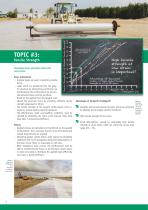
TOPIC #3:Tensile Strength Immediate Stress absorption offers safe construction Basic Information - Granular layers are weak in absorbing tensile forces. - Loads which are transferred into the geogrid structure via interlocking and friction are distributed by the reinforcement via the tensile elements (bars) and the junctions. - Based on the applied load, the geogrid must absorb the maximum stress by providing sufficient tensile strength (expressed in kN/m). - The tensile strength of the geogrid reinforcement must increase as subsoil bearing capacity decreases. - The effectiveness under...
Open the catalog to page 6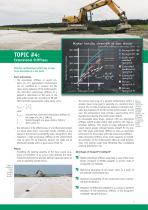
Higher tensile strength at Lou> strode Cxte^sioMal $tiffwess in Ike range of 0% - 1% Effective reinforcement effect due to high force absorption at a low strain Basic Information - The extensional stiffness or secant modulus (J) of a geosynthetic reinforcement can be specified as a measure for the stress-strain-behaviour of the reinforcement. The short-term extensional stiffness of a geogrid is determined on the basis of the wide-width tensile test according to EN ISO 10319 and the representative stress-strain curve: 1560 kN/rvi lllo UN/wi Secugrid.© <56 Secugrid© Q1 Laid,...
Open the catalog to page 7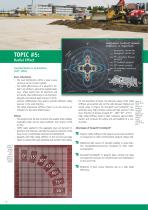
Mulfci.ax.Lal (radial) secaw\fc stiffness Is important. TOPIC #5: Radial Effect Secugrid® 30/30 Sb Secugrid.© 30/30 ©1 —■ PP extruded, biaxial geogrid ■ PP knitted geogrid tojovfcw geocjridl Load distribution in all directions (360° effect) Basic Information - The load distribution within a base course structure can be circular (radial). - The radial effectiveness of a geogrid is linked to its ability to absorb the applied loads (e.g., wheel loads) from all directions and to transfer them effectively in all directions. - Geogrids must absorb peak stresses in all directions. Additionally,...
Open the catalog to page 8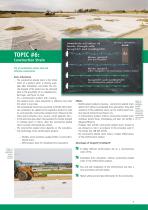
tensile strength. v^ltk SecugrlcA<£> andl CowblgrldUsD Woven geogrlci (not pre-stresseci) 0% of construction strain: safe and effective construction Woven geogrldl (after dissipation of construction related strain) Basic Information - The construction-related strain is the initial strain of a product which is directly available after installation and before the tensile strength of the product can be activated (due to the possibility of an undulated product layer, see Figure 12, top). - For a reinforcement product with construction-related strain, stress absorption is effective only...
Open the catalog to page 9
Torsional ri.gui.ifcy is a facfcor fckafc improves bearing capacity High torsional rigidity supports an effective interlocking ancl lateral restraint. J5, TOPIC #7:Torsional Rigidity Figure 13 Application of torsional stress to Secugrid® geogrid sample Figure 14 Torsional rigidity of different geogrid types Stiff geogrid structure supports granular particles Basic Information - Trafficking base courses causes shear strains, which differ with regard to their intensity and direction. - The torsional rigidity defines the resistance of a geogrid against torsion. - Tests carried out in the USA...
Open the catalog to page 10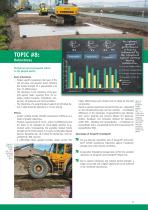
Akv. opclwio.1 geogrld performance Is ke.avi.Ly Influenced by tke robustness against damage during Mechanical and environmental effects on the geogrid quality <S 1 0-5 rvrv crufketi £tov\«, &2 0-32 MfVi cruskfcdl crow*: Gx? o-75 »virvi c rusk*, a sfcovx* Basic Information - Project-specific parameters like type of fill, soil pH-value and dynamic loads influence the tensile strength of a geosynthetic and, thus, its effectiveness. - The robustness is the resistance of the geo- CxcrudUsd. rviulti-axial &eog't«A grid against loads, resulting from, for example, product transport, installation,...
Open the catalog to page 11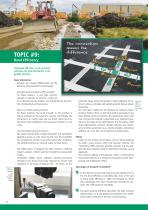
TOPIC #9: Bond Efficiency Good bond efficiency in the junctions optimises the load distribution in the geogrid structure Basic Information - Geogrids are usually differentiated by the following three production technologies: Extruded and pre-stressed (stiff junctions): For these products, a very high junction strength is required, as all forces, which are to be absorbed by the product, are distributed via the junction (longitudinal and transverse). Woven or knitted (weak junctions): For these products, the bond strength in the junction is mainly achieved by the polymeric coating. Accordingly,...
Open the catalog to page 12All NAUE catalogs and technical brochures
-
Secugrid® HS
4 Pages
-
Combigrid®
4 Pages
-
Secugrid® PET/PP
4 Pages
-
CARBOFOL® geomembranes
4 Pages
-
geotextile introduction
4 Pages
-
SECUTEX® Soft Rock
4 Pages
-
MINING and GEOSYNTHETICS
11 Pages
-
BENTOFIX® X
4 Pages
-
BENTOFIX®
4 Pages
-
LANDFILL Engineering
13 Pages
-
Civil engineering
32 Pages
-
Tunnel construction
16 Pages
-
NAUE_Renewable_wind_energy
8 Pages
-
Secugrid® PDF
3 Pages
-
Secudrain® PDF
2 Pages
-
Combigrid® PDF
2 Pages
-
Bentofix® PDF
3 Pages
-
Carbofol® PDF
3 Pages

